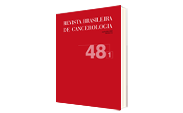A mastectomized woman submitted to chemotherapy treatment: a behavioral study according to Roy's adaptative model perspectives
DOI:
https://doi.org/10.32635/2176-9745.RBC.2002v48n1.2259Keywords:
Breast Neoplasms, Chemotherapy, Nursing Diagnosis, Behavior, Psychological Adaptation, Nurse-Patient RelationsAbstract
A woman with breast cancer experiences psychological conflicts and emotional disturbances before the beginning of the treatment. It was aimed: to know the stimuli that act in the mastectomized woman in chemotherapy treatment; to identify her forms of behavior when facing these stimuli, establishing nursing diagnoses; and to elaborate nursing interventions, in order to help the woman in promoting of adaptative responses. This case study was carried out with a mastectomized woman who attended the mastectomized women support group of Ceara’s Federal University, using as theoretical reference Roy’s adaptative model. Data were collected at a form, over four home visits. The behavior and stimuli evaluation pointed to the following diagnoses: sleep disorder related to pain and environmental modifications; pain related to secondary cancer disorder; altered nutrition; skin damage; anxiety related to the idea of jeopardized self-image; disturbance in the corporal image related to appearance changes secondary to the chemotherapy; and social isolation related to the deformed appearance and to the rejection fear secondary to cancer. After nursing interventions, the main results were: sleeping and nutrition problems improvement; use of artifices due to the corporal image improvement and friends and family frequent visiting. The client has developed in a satisfactory way, presenting adaptative behaviors gradually. Roy’s nursing process provided the stimuli identification, making possible the planning of more specific interventions.









